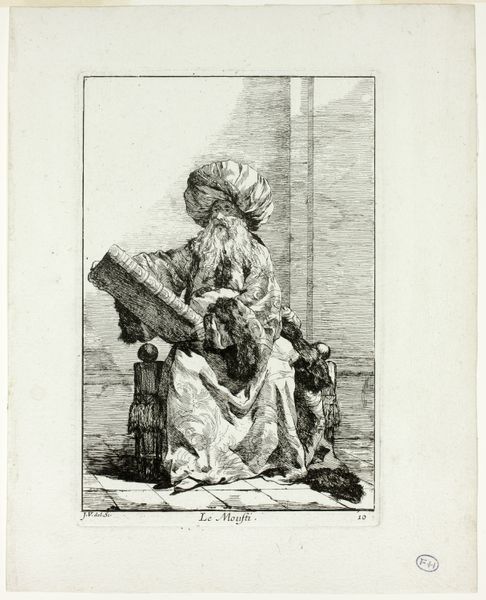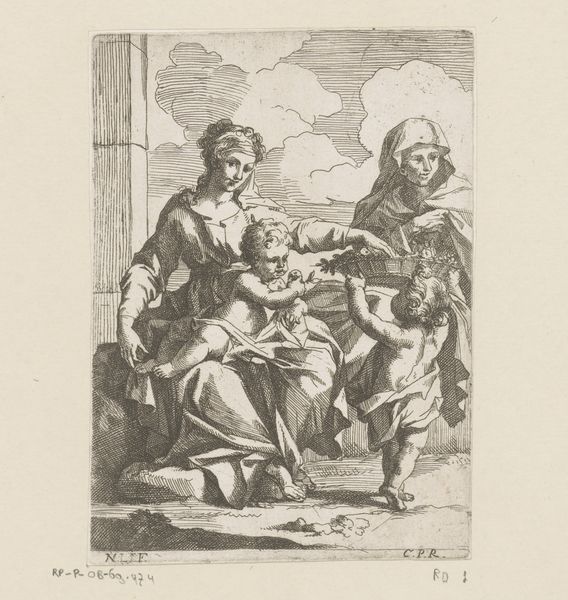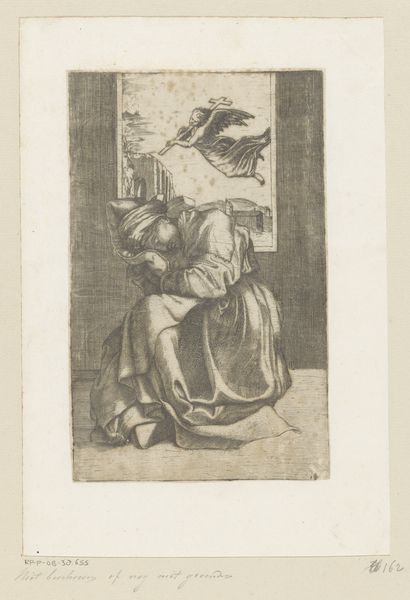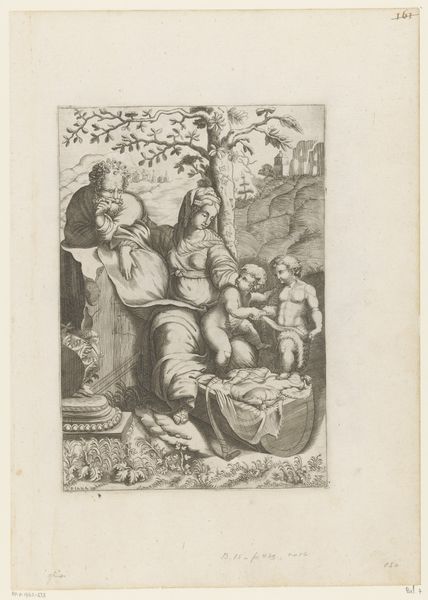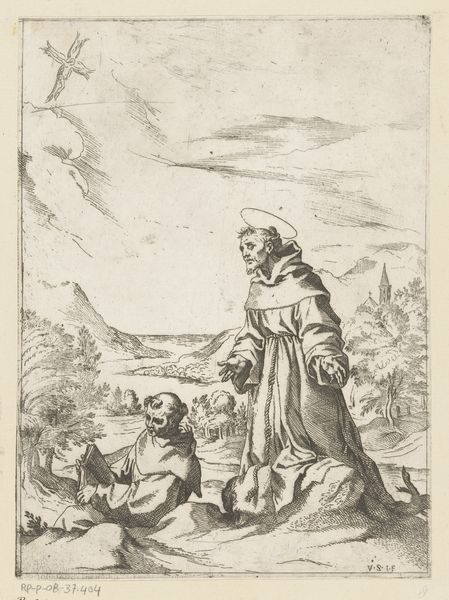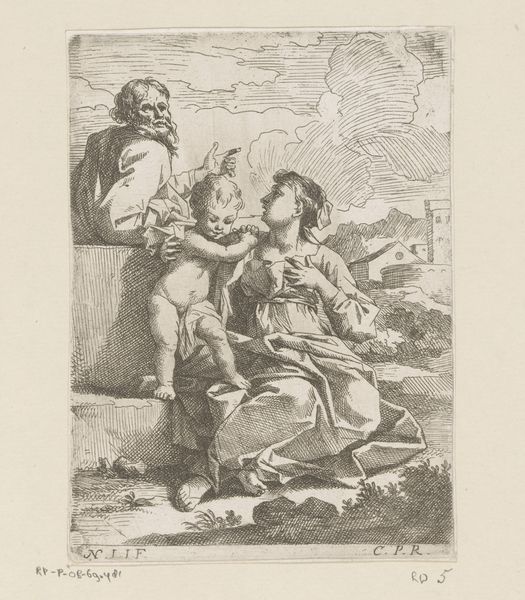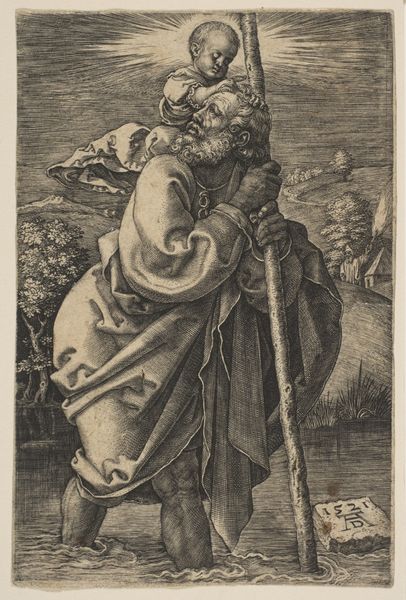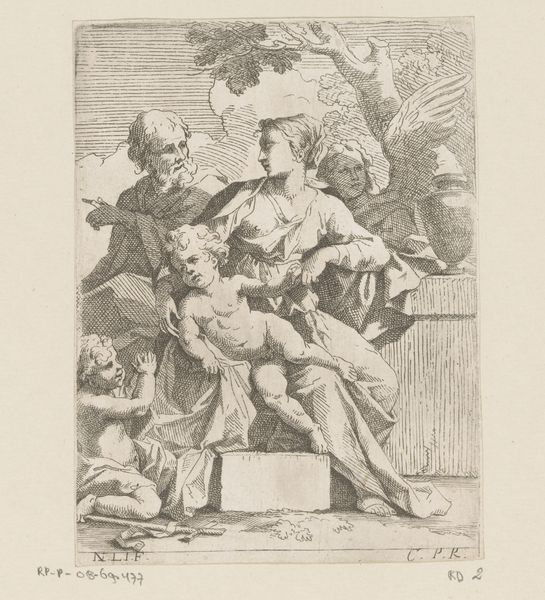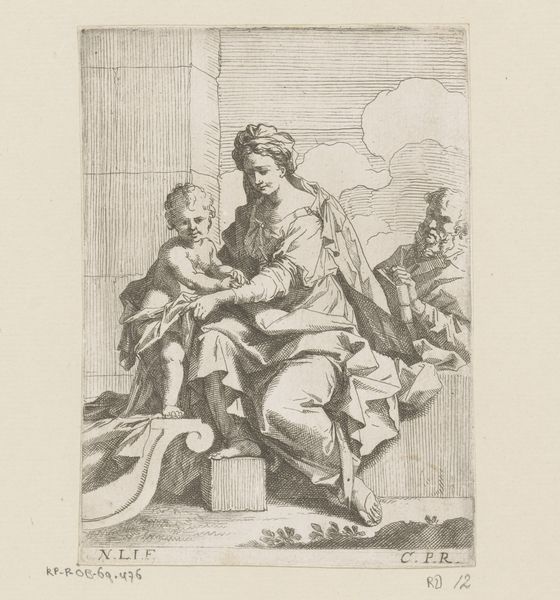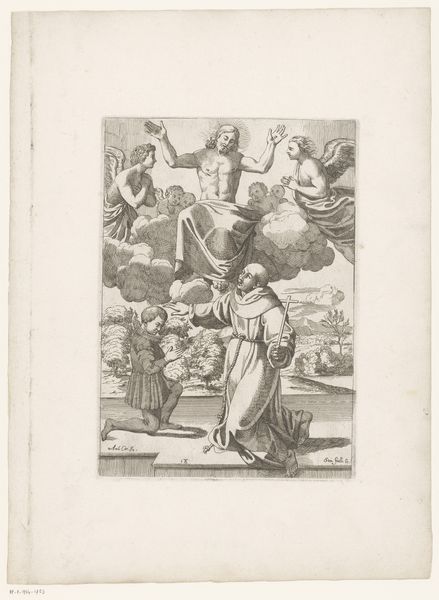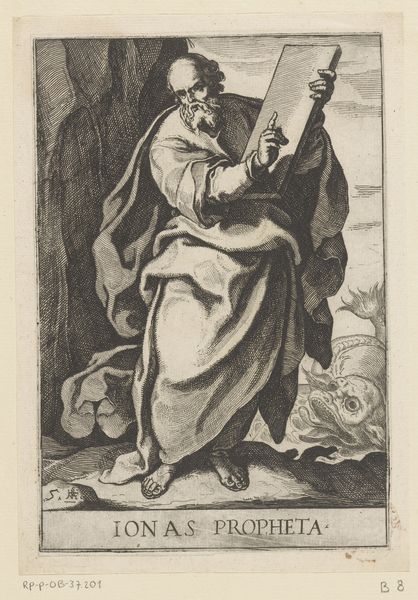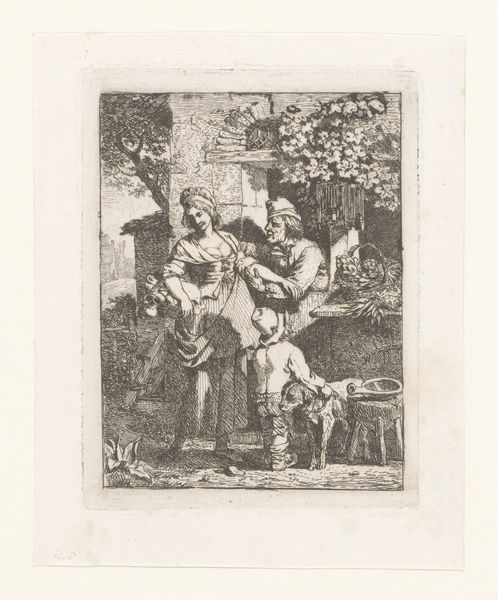
print, engraving
#
baroque
# print
#
figuration
#
line
#
history-painting
#
engraving
Dimensions: height 207 mm, width 146 mm
Copyright: Rijks Museum: Open Domain
Curator: This engraving is entitled “Holy Family on a Step,” and it was created sometime between 1626 and 1657. The artist is Sebastien Bourdon. Editor: What strikes me immediately is the vulnerability. This wobbly toddler, tentatively putting his foot down, it just feels so exposed. It also seems less "holy" and more human. Curator: Indeed. Bourdon was working in a period heavily influenced by the Baroque style, which often aimed to evoke emotional responses. The setting--the architecture-- lends an air of classicism that harkens back to earlier Renaissance ideals. This kind of interplay was common as artists sought to synthesize different artistic lineages and sacred ideas about familial relations. Editor: Absolutely, but consider that single step: metaphorically, it feels like a precarious balance between safety and the unknown, that hesitant first step that echoes every child’s attempt at independence, assisted by Mary's embrace, that could be interpreted as reluctance. What does Joseph in the shadows represent in your perspective? Curator: Good question. Often, images like these served a devotional purpose. To see the 'hidden' father is perhaps a prompt for religious people, that would come across the print, to recognize paternal presence beyond the material world. To appreciate his supporting role in a way that bolsters the importance of paternal involvement, as the Church teaches to act on Earth. Editor: I like your perspective. The more I look at it, the more I see the vulnerability in the step itself – the fear, maybe. But also the trust…that outstretched hand offering this unconditional love as the ultimate safety net. Is there anything unique or special, for example, concerning Bourdon and print making? Curator: Bourdon was best known as a painter, however this engraving, now at the Rijksmuseum, reveals a skilled adoption of graphic media for broader circulation, in order to disseminate the subject widely and cement Church authority during the Post-Reformation era. It is an insight into a very conscious effort of social influence that extends far beyond artistic creation itself. Editor: It's intriguing to realize how much these 'holy' images worked as social tools back then. The work may still appeal because it transcends the period with the vulnerable depiction of that step we all need to take someday in life. Curator: Agreed, that universality allows us to perceive art beyond any specific historical situation. Thanks for your valuable comments.
Comments
No comments
Be the first to comment and join the conversation on the ultimate creative platform.

